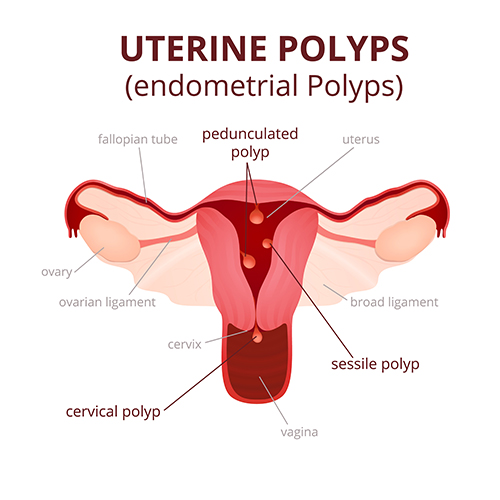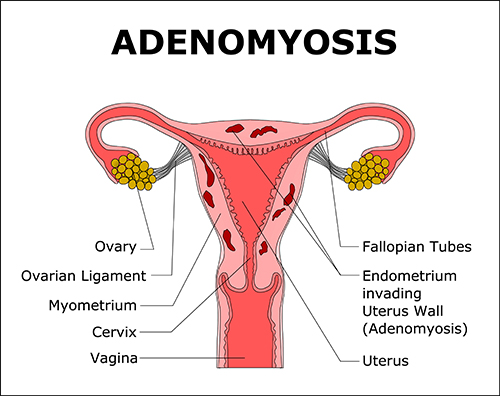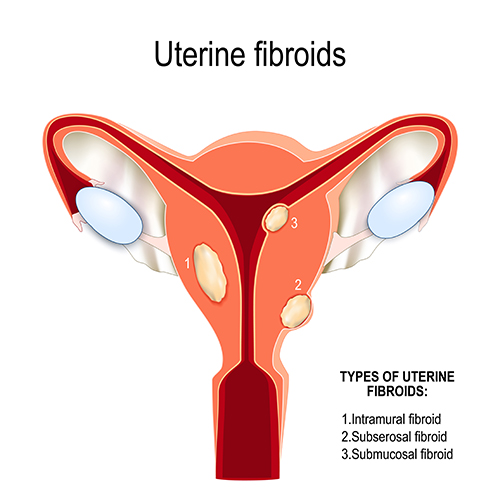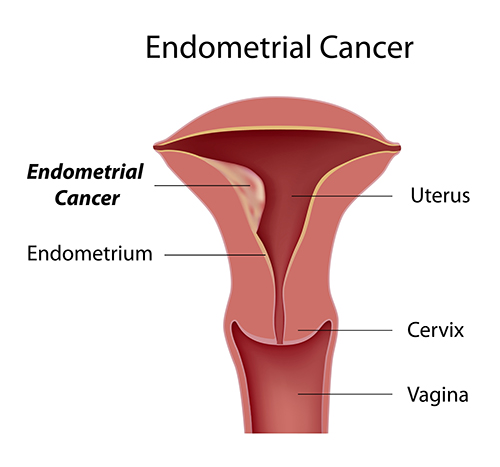The International Federation of Obstetrics & Gynaecology (FIGO) now recommend that abnormal uterine bleeding be categorised based on the underlying cause using the PALM-COEIN system.
PALM-COEIN stands for:
P = Polyps: These are localised thickenings of the lining of the womb. They become increasingly common as women get older.

A = Adenomyosis: This refers to the ingrowth of the lining of the womb into the muscle of the womb and usually causes womb enlargement.

L = Leiomyoma (or Fibroids): Fibroids (or myomas) are the commonest tumours found in women and one of the commonest causes of heavy bleeding. By age 50, almost 70% of white women and more than 80% of black women will have developed at least one fibroid. Fibroids are made up of muscle cells and connective tissue cells and are almost always non-cancerous. There are different types of fibroids depending on their location within the wall of the womb. Those located closest to the lining of the womb (or submucosal fibroids) are thought to be the most problematic regarding bleeding problems. For more information, see my section on Uterine Fibroids.

M = Malignancy (or cancer). Cancer of the womb lining or endometrial cancer is the commonest form of gynaecological cancer in the western world. It is very rare in women before the menopause. Obesity and PCOS are associated with an increased risk of developing endometrial cancer. Cancer of the neck of the womb (or cervical cancer) can also cause abnormal bleeding.


C = Coagulopathies. Coagulopathy refers to a tendency to bleed excessively due to defects in the clotting mechanism. Coagulopathies such as Von Willebrand disease are reported to be present in around 13% of women with heavy menstrual bleeding.
O = Ovulatory. This category refers to women who do not ovulate regularly. In these instances, only one hormone, oestrogen, is produced and can cause excessive thickening of the lining of the womb. The combination of anovulation and excessive thickening of the lining of the womb leads to infrequent periods (spaced more than 38 days apart) that are very heavy. One of the commonest causes of anovulation and of this pattern of bleeding is PCOS, although there are other causes such as high prolactin levels. For more information, see my sections on The Menstrual Cycle and Ovulation Tracking; Anovulation and Ovulation Induction, and; PCOS.
E = Endometrial. Women in this category typically present with regular heavy periods and a normal womb structure. Making this diagnosis requires exclusion of other causes such as fibroids or polyps. It is thought to arise due to an imbalance of chemicals such as prostaglandins and clotting factors within the womb lining.
I = Iatrogenic. This refers to abnormal bleeding that is brought about due to another treatment. For instance, an intrauterine device (IUD) can sometimes cause abnormal bleeding by causing inflammatory changes within the womb lining.
N = Not otherwise classified. This is used to refer to very rare conditions or ones that are poorly defined. Examples include aneurysms of blood vessels within the womb or chronic inflammation of the womb lining (endometritis) in the absence of an IUD.
